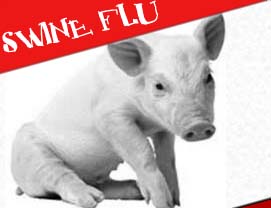Six months ago, swine flu began by closing schools
 Mexico City - Six months ago Mexico's health minister made an announcement on late night television that shocked and puzzled.
Mexico City - Six months ago Mexico's health minister made an announcement on late night television that shocked and puzzled.
"We are in the presence of a new influenza virus," said Jose Angel Cordova Villalobos, announcing the abrupt closure of schools across the country.
It was 11 pm on Thursday, April 23 when the message was broadcast on all major radio and television stations. Parents scrambled to make arrangements for their children.
"In the coming hours we will continue to keep people informed," Cordova Villalobos said.
It was the most urgent response to a health emergency in Mexico's living memory.
Since then, neither the health minister nor the rest of the world have put behind them the new illness, swine, later known as H1N1 influenza. The virus is believed to have sickened about 400,000 people around the world, with 4,735 deaths according to the World Health Organization (WHO).
What prompted Cordova Villalobos to make the rushed announcement was confirmation from a Canadian laboratory that the new virus had been detected in suspicious influenza samples.
Fear of the spread of an unknown lethal disease paralyzed Mexico. Schools, universities, football stadiums, restaurants and cinemas closed for two weeks. Face masks and anti-bacterial gel saw record sales. Foreign tourism almost stopped.
Financial losses were huge, estimated at several percentage points of the country's GDP.
Some countries suspended flights to and from Mexico and quarantined Mexicans, even if they showed no symptoms of the disease.
Six months down the road, the H1N1 influenza has become a pandemic without borders, but one that is less aggressive than was initially feared.
Of major concern, however, is how the virus defies expectations in its selection of victims. It is young adults that it singles out. Close to 68 per cent of the dead were aged 20-54, not the elderly as is usual with normal seasonal virus.
Pregnant women are at special risk, as are people suffering obesity, asthma, diabetes, cancer, AIDS and other diseases that compromise the immune system.
Treated quickly with anti-virals like Tamiflu, the lethality of the virus can be tamed down, and experts are urging doctors to treat the illness immediately rather than depend on rapid virus tests which they say are unreliable.
Following a first wave in April and May that hit Mexico, then the United States and Canada, the virus headed for South America.
Now, as winter approaches in the northern hemisphere, North America is experiencing its second wave as Europe braces for problems.
Pharmaceutical companies around the world are working hard to satisfy demand for vaccines. But there will simply not be enough. Countries like France are preparing to have enough doses for their whole population, while others will need to prioritize the types of people who come first in line, starting with health personnel.
World production capacity for anti-pandemic vaccines is estimated at 3 billion doses per year, for a global population of 6.8 billion people.
The good news is that researchers have established that one single dose per person - instead of two, as was originally believed - will be enough, so that some countries will have spare vaccines.
The United States, Australia, Brazil, France, Italy, New Zealand, Norway, Britain and Switzerland have said they will donate vaccines to the WHO for use in developing countries.
With cold weather on the lurk in the north and no prospect of vaccinating the entire population, doctors emphasize the need for basic hygiene like handwashing, avoiding kisses and handshakes, sneezing into one's handkerchief or inner elbow, regularly cleaning up surfaces and seeking treatment as soon as possible once symptoms emerge.
Health services could be saturated as more patients present with respiratory problems, one of the most common complications of the H1N1 viral illness and a frequent cause of death.
Since April, Mexico has counted 271 deaths from a total of 45,809 confirmed infections. Many countries have stopped counting cases, and the exact number of infections around the world is anybody's guess.
However, six months after the initial scare, Cordova Villalobos noted that the H1N1 influenza virus has shown "benign behaviour."
In Mexico, about 14,000 people normally die every year of pneumonia and other respiratory problems. Without easing precautions, Mexico's health minister asked that figures be taken in due proportions, without exaggerations.
The number of dead from the H1N1 virus in Mexico "is really nothing," Cordova Villalobos insisted.
"Every year 75,000 diabetics die of complications," he stressed. (dpa)